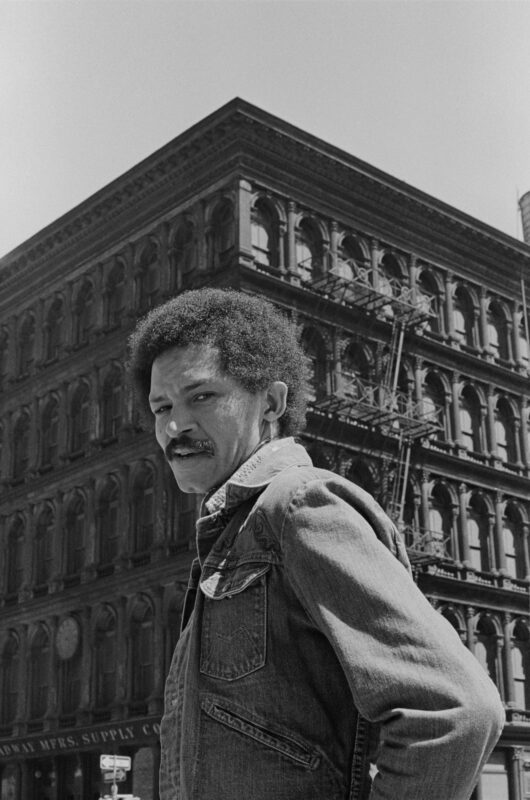
The Museum of Modern Art to open Ruth Asawa: A Retrospective, the first major museum exhibition to fully consider every aspect of the artist’s expansive, groundbreaking practice.

Coinciding with the centennial of the artist’s birth, the exhibition will include some 300 objects that highlight the core values of experimentation and interconnectedness pervading all dimensions of Asawa’s practice. The retrospective will span the six decades of Asawa’s ambitious career, presenting a range of her work across mediums, including wire sculptures, bronze casts, paper folds, paintings, and a comprehensive body of works on paper. Artwork will be accompanied by a rich array of archival materials—photographs, documents, and ephemera—that illuminate her public commissions, art advocacy, and meaningful, lasting relationships with members of her community. The exhibition will follow a loose chronological arc, interwoven with thematic sections elaborating on the artist’s inspirations and methods.

Ruth Asawa: A Retrospective is an exhibition partnership between the San Francisco Museum of Modern Art (SFMOMA) and The Museum of Modern Art, New York (MoMA). The exhibition is organized by Cara Manes, Associate Curator, Department of Painting and Sculpture, MoMA and Janet Bishop, Thomas Weisel Family Chief Curator and Curator of Painting and Sculpture, SFMOMA; with Dominika Tylcz, Curatorial Assistant, Department of Painting and Sculpture, MoMA; and Marin Sarvé-Tarr, Assistant Curator, and William Hernández Luege, Curatorial Associate, Painting and Sculpture, SFMOMA. The exhibition will be on view at SFMOMA from April 4th through September 2nd, 2025. After its presentation at MoMA, it will travel to Guggenheim Museum Bilbao, Spain (March 20th–September 13th, 2026); and Fondation Beyeler, Riehen/Basel, Switzerland (October 18th, 2026–January 24th, 2027).

What’s exceptional about Asawa’s practice is the multiplicity of her artistic pursuits and the marvelous ability to turn the simplest things into subjects of lifelong creative contemplation. The exhibition aims to offer multiple points of entry into her work, reflecting what Asawa described as the ‘total act’ of artmaking.
Cara Manes
Ruth Asawa (1926–2013) was born in Norwalk, California, and raised on a farm. In the wake of Executive Order 9066 signed in 1942, the teenage Asawa and her family were unlawfully incarcerated in war relocation camps along with thousands of people of Japanese descent.
After the end of World War II, Asawa enrolled in the experimental Black Mountain College near Asheville, North Carolina, where she explored the artistic possibilities of ordinary materials. There, she developed a technique for looping wire informed by Mexican wire basketry, which she had observed firsthand as a student volunteer in Toluca. This invention would lead to her most consequential contribution to abstract sculpture in the 20th century: a radical body of suspended, intricate looped-wire sculptures. The exhibition will begin with a selection of works from her time at Black Mountain College, including explorations of materials, color, and shape in drawings, collages, and prints such as Untitled (BMC.145, BMC Laundry Stamp) (c. 1948–49).
Asawa continued her material experimentation in wire and paper following her 1949 move to San Francisco, the city that would be the center of her artistic activities for the rest of her life, and where she established a tightly-knit family and community. Shortly after her arrival there, she articulated the key motifs and shapes in her looped wire forms in works like Untitled (S.535, Hanging Five-Lobed Continuous Form within a Form with Spheres in the First and Fourth Lobes and a Teardrop Form in the Third Lobe) (1951), on view in the exhibition. She also expanded her range of techniques in drawing, printmaking, and paperfolding, while taking on various commercial design commissions and exhibiting regularly at the Peridot Gallery in New York. In the early 1960s, Asawa discovered a new method of working with wire by tying and splaying it in ways that evoke organic structures, as seen in works like Untitled (S.390, Hanging Tied-Wire, Double-Sided, Center-Tied, Multi-Branched Form with Curly Ends) (1963). Asawa continued to experiment with natural forms during a residency at the Tamarind Lithography Workshop in Los Angeles in 1965, where she produced a portfolio of diverse, formally rigorous and experimental prints. Drawing from MoMA’s collection, a concentration of works from this portfolio will be included in the exhibition, many of which will be on view for the first time.
Parallel to her artistic experimentation, Asawa dedicated herself to her lifelong quest to integrate arts education and practice. One of Asawa’s most transformative projects was the Alvarado Arts Workshop, which started as a grassroots initiative and grew to a momentous movement that embedded vital arts-education programming in San Francisco Bay Area public school systems. Galleries in the exhibition will feature archival material related to Asawa’s civic engagement, teaching practice and numerous collaborative public art projects, including Japanese American Internment Memorial (1994) commissioned by the city of San José. Focus on Asawa’s visionary pedagogy will extend to the exhibition’s public programming.

A final gallery in the exhibition will highlight the last decades of Asawa’s life, which were marked by a renewed dedication to a daily drawing practice. Asawa tenderly documented her surroundings, paying particular attention to the botanical forms around her, as seen in works such as Untitled (PF.293, Bouquet from Anni Albers) (early 1990s). Ruth Asawa: A Retrospective will be accompanied by a richly illustrated catalogue featuring original contributions by a diverse group of authors. Special thanks to Ruth Asawa Lanier, Inc. for their invaluable participation in this project.
Ruth Asawa: A Retrospective, October 19th, 2025 – February 7th, 2026 MoMA







